Previous Planning Efforts
Multimodal Plan Heading link
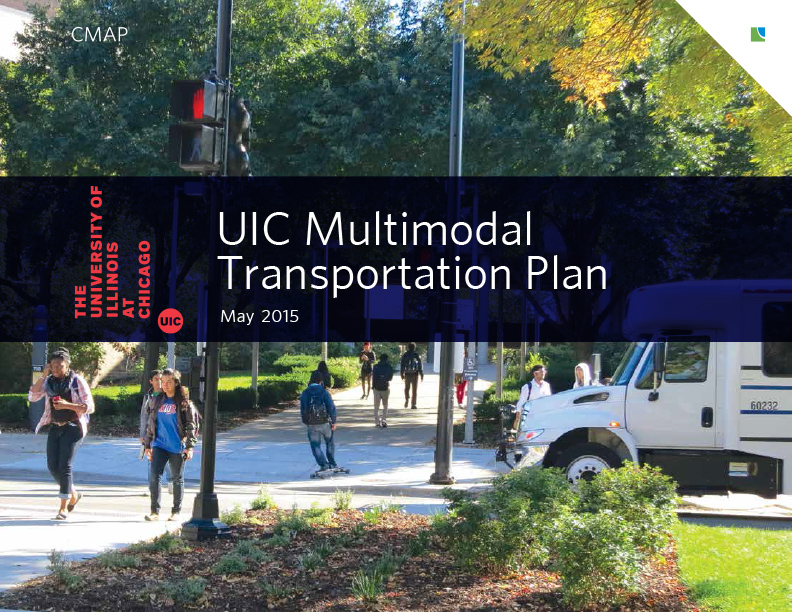
UIC was the recipient of a technical assistance grant from the Chicago Metropolitan Agency for Planning (CMAP) through its Local Technical Assistance (LTA) program. This grant enabled the development of the 2015 UIC Multimodal Transportation Plan , which builds on the 2010 UIC Campus Master Plan and focuses on facilitating safe, accessible and integrated travel throughout the campus and adjacent Chicago communities. The 2015 UIC Multimodal Transportation Plan provides recommendations for UIC to improve the flow of pedestrians, cyclists, and vehicles in and around campus and to better serve the needs of all travelers, including persons with disabilities. This plan was authored in collaboration by UIC and CMAP with guidance from the Chicago Department of Transportation (CDOT), Chicago Transit Authority (CTA, and Illinois Department of Transportation (IDOT). In 2016, UIC was selected by CMAP as one of ten LTA recipients to receive implementation assistance. UIC continues to work with CMAP on actualizing the recommendations set forth in the 2015 UIC Multimodal Transportation Plan through on-campus improvements, collaboration with the City and pursuance of alternative funding opportunities. The data, research and recommendations set forth in the 2015 UIC Multimodal Transportation Plan continue to serve as a resource for campus transportation planning.
2015 TIGER Grant Application Heading link
In 2015, UIC applied for funding from the Transportation Investment Generating Economic Recovery (TIGER) Discretionary grant program sponsored by the U.S. Department of Transportation. TIGER is a highly competitive grant program that supports initiatives that make long-term, transformative and positive investments in the nation’s surface transportation infrastructure. UIC’s application, Crossroads and Connections, facilitates safe and accessible travel throughout the campus and adjacent Chicago communities. Positioned at the junction of the largest transportation network in Chicago, Crossroads and Connections provides metamorphic transportation improvements to better connect neighborhoods, schools, hospitals, research centers and business districts. This project implements the 2010 UIC Campus Master Plan and the 2015 UIC Multimodal Transportation Plan and recommends enhancements to ten major activity hubs and the multimodal corridors that connect these hubs. The project works to:
- Reinforce Safe Circulation
- Enhance the Sense of Place
- Connect Hubs of Activity
- Integrate Campus and Community
Crossroads and Connections aims to improve high-risk intersection and crossing points, enhance parking facilities, provide safer access to existing regional transportation, implement eco-friendly transit options and create accessible pedestrian and bicycle amenities throughout the area. Users of all transportation modes will benefit from the safety, environmental and accessibility improvements that Crossroads and Connections will accomplish while enriching the community’s quality of life and boosting the local economy. Unfortunately, UIC’s application was not funded, but the data and research collected through this initiative continues to be used to better inform campus planning and development efforts.
TIGER Grant Application Heading link
2010 UIC Campus Master Plan Heading link
The 2010 UIC Campus Master Plan provides a framework for UIC’s future development over the next forty to fifty years. The goal of the plan is to create a cohesive campus of integrated buildings, transportation corridors and the natural environment. Three key objectives were established in this plan to guide the future development on campus: cohesion and clarity, sense of place, and connections. The plan accomplishes these objectives through recommendations for land use, buildings, transportation, pedestrian experience, parking, identity and sustainability. This plan was developed using valuable input from the campus community within and beyond UIC’s borders. Eight town hall meetings, one community forum in which 162 local organizations were included, as well as a individual interviews, group engagements, student-led courses and open houses provided irreplaceable community input for the plan. Both long-term visionary recommendations and immediate impact projects were recommended. The 2010 UIC Campus Master Plan continues to serve as a guiding framework for campus planning efforts.
Executive Summary Heading link
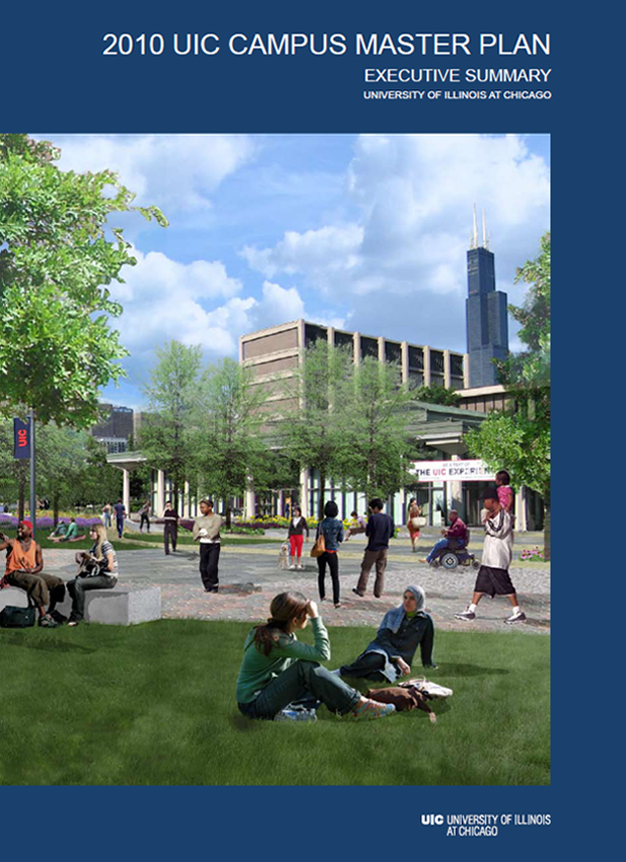
Executive Summary
The master plan creates a flexible framework to guide the future physical development of the campus as funding and needs prescribe. This summary describes the objectives of the Campus Master Plan, juxtaposes the campus of today with that of the future, and articulates major planning directions for both its East and West Sides.
Final Report Heading link
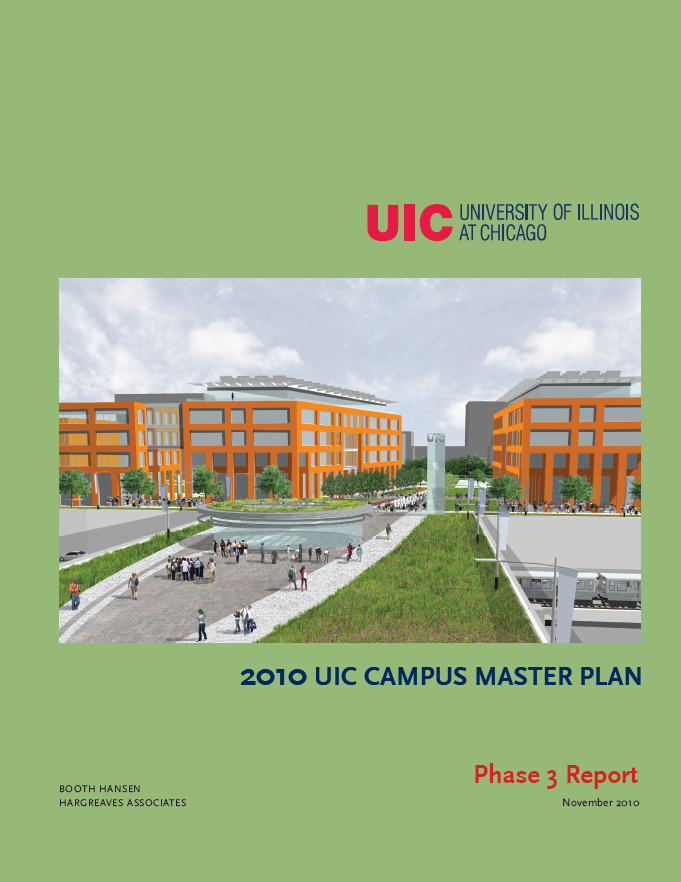
Master Plan Phase 2 Report Heading link
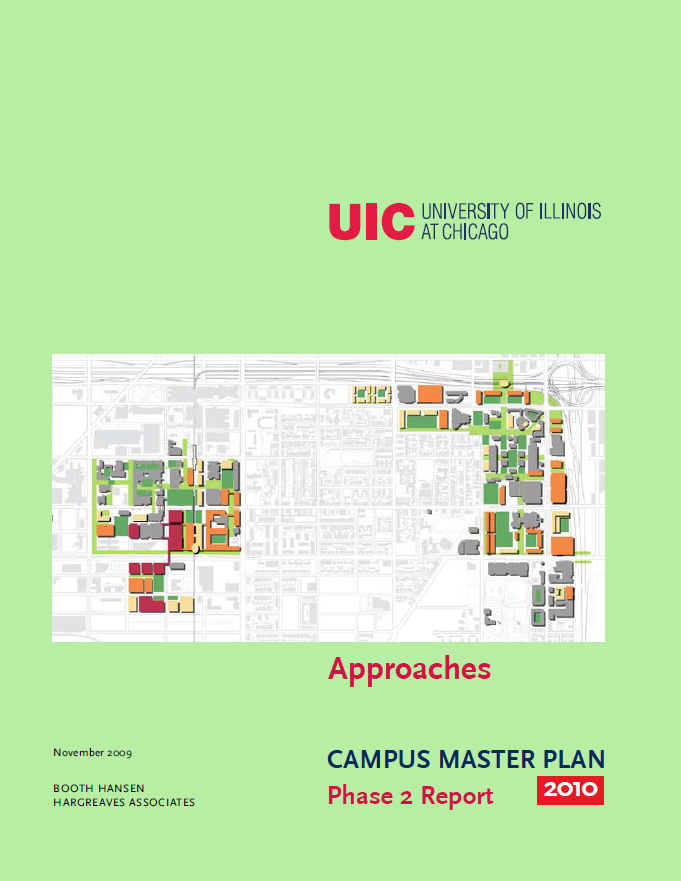
Phase 2 Report
The master planning process is founded on the premise that a campus exists as a place for all people who regularly interact with the campus, including those who attend as students, who serve as education and research professionals, and who live in the surrounding community among others. This is the Phase 2: Options – Alternates & Preferred Plan report.
Master Plan Phase 1 Report Heading link
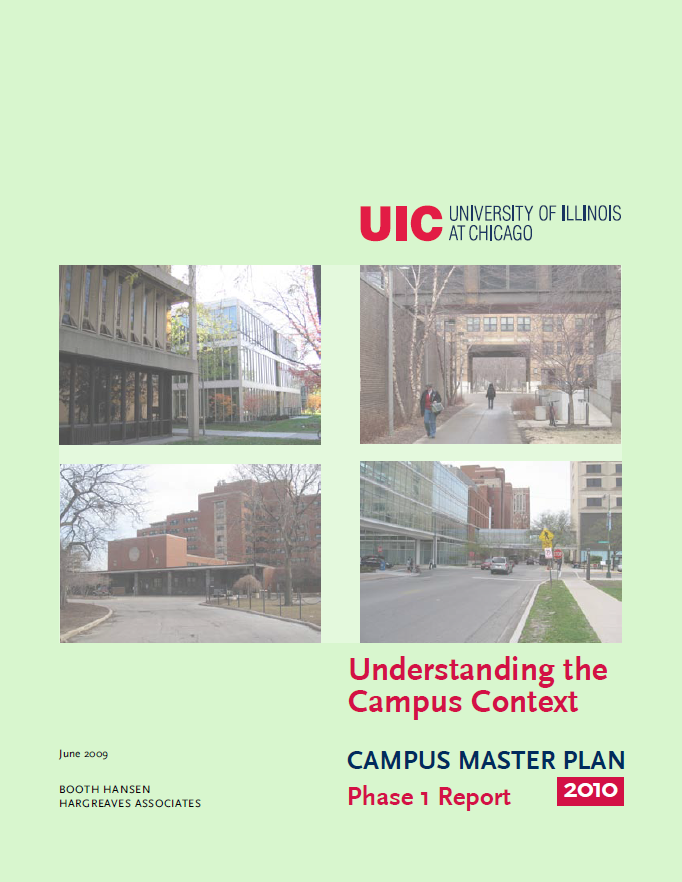
Phase 1 Report
The master planning process is founded on the premise that a campus exists as a place for all people who regularly interact with the campus, including those who attend as students, who serve as education and research professionals, and who live in the surrounding community among others. This is the Phase 1 – Understanding the Campus Context report.
Student Open House Report Heading link
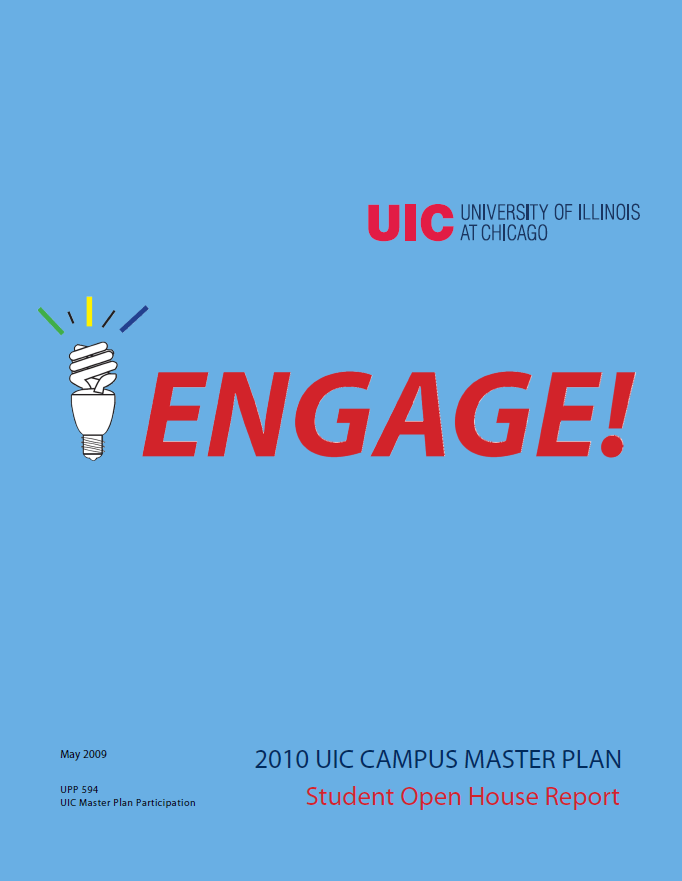
The modern public university campus attracts an astonishing variety of users who experience the physical features of the place. This document illustrates how campus leadership can cleverly leverage campus resources to obtain both more efficient and effective involvement in campus affairs.
Evening Campus Plan Heading link
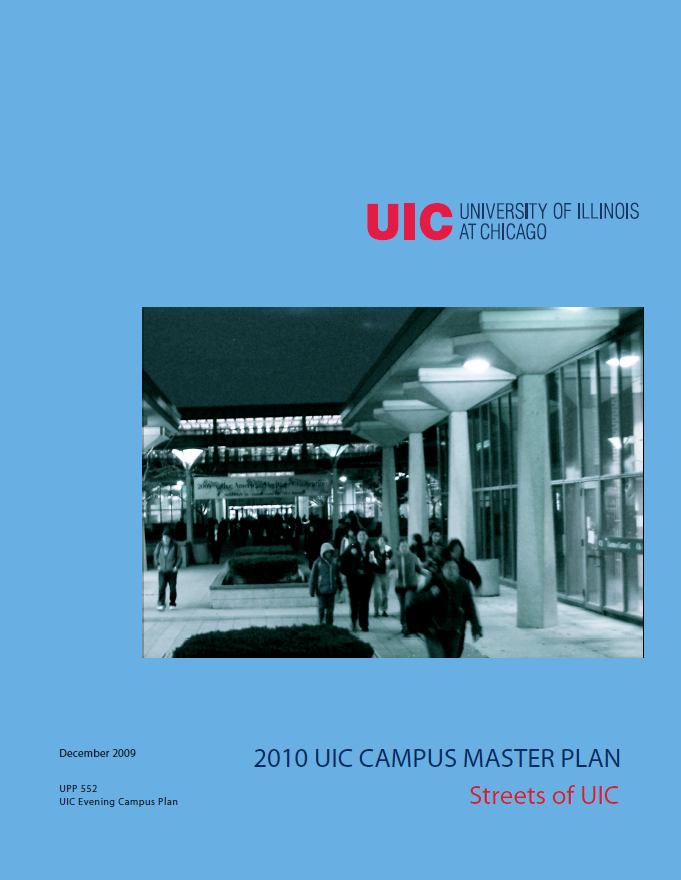
Evening Campus Plan
UIC Evening Campus Plan provided an important demonstration that a long term Master Plan effort can inspire practical near term campus improvements.
1997 Executive Summary Heading link
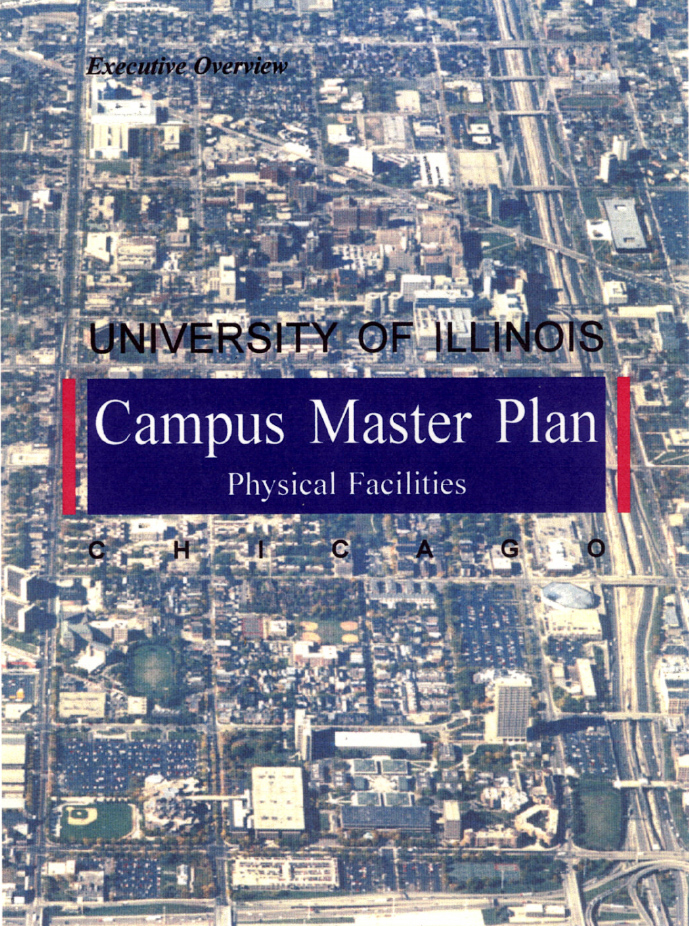
The 1997 UIC Campus Master Plan: Physical Facilities serves as an update to the 1990 Campus Master Plan. The 1997 plan provides information and recommendations on UIC’s physical development including the construction and renovation of various facilities, land use and the campus environment.
1991 Technical Report Heading link
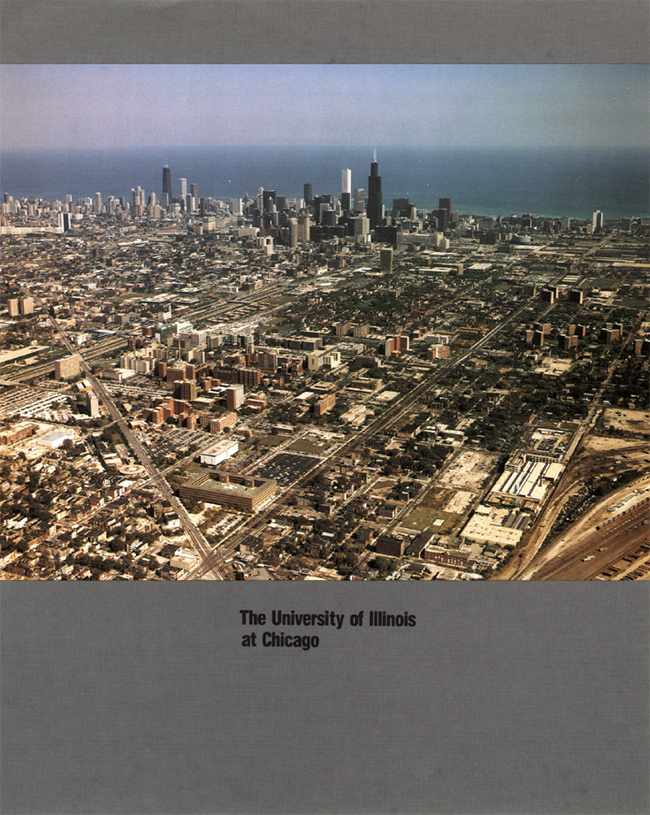
The 1991 Campus Master Plan Technical Report supplements the 1990 UIC Campus Master Plan and provides in-depth, detailed explanation of the recommendations set forth in the 1990 plan. This report provides an extensive review of the planning process, concept guidelines, subcampus plans, design guidelines and plan implementation that were used to develop the 1990 UIC Campus Master Plan.
1990 Executive Summary Heading link
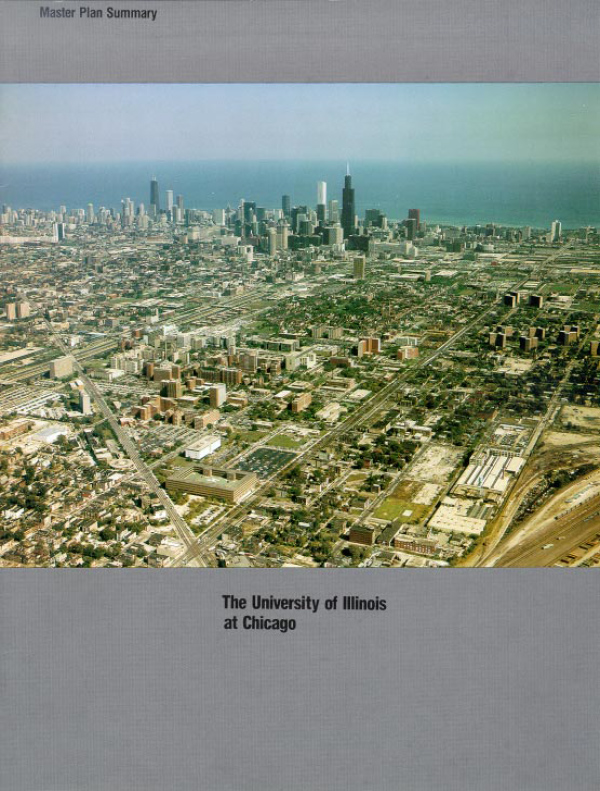
The 1990 Campus Master Plan was the first comprehensive master plan for UIC approved by the Board of Trustees. The goal of this plan was to create a foundation for campus planning and future campus development. The 1990 Campus Master Plan aims to improve the quality of life on campus, simplify and enhance campus organization, improve operational efficiency and identify flexible strategies for accommodating growth.